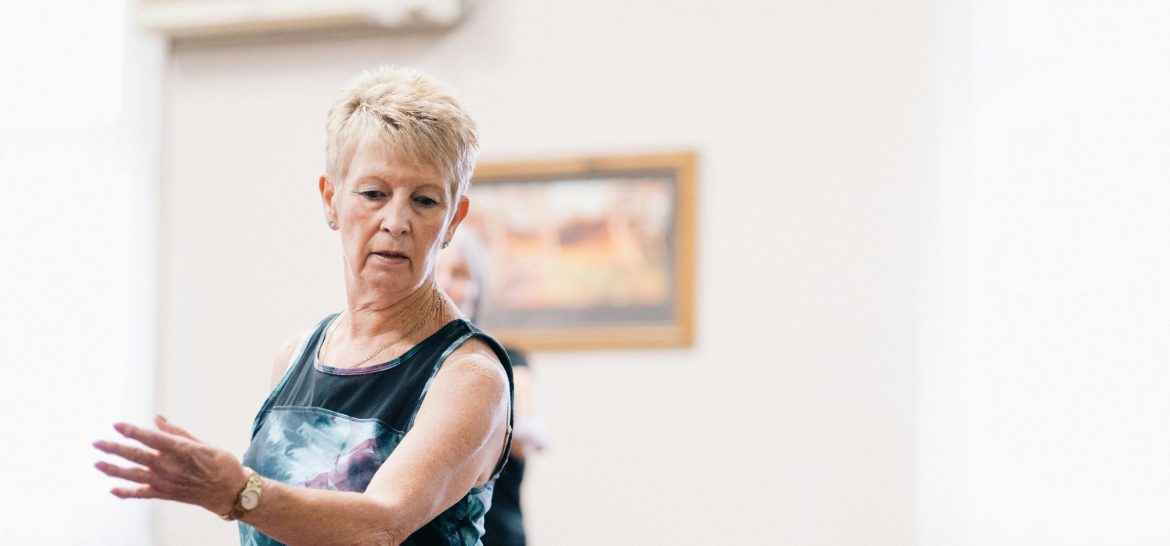Staying healthy as we age isn’t just about avoiding illness—it’s about living life to the fullest. For seniors, staying active and engaged is a cornerstone of maintaining not just physical health but also mental and emotional well-being.
As Dr. Kenneth H. Cooper once said, “We do not stop exercising because we grow old—we grow old because we stop exercising.”
However, the traditional approach to fitness can sometimes feel like a chore, especially for those who may already face physical limitations or lack motivation. That’s where the magic of combining exercise with entertainment comes in.
Imagine turning a daily workout into a dance party, a game, or a social gathering. This innovative approach not only makes exercise more enjoyable but also encourages consistency and enthusiasm.
By infusing fun into fitness, seniors can stay active, happy, and connected to their communities. This method transforms the concept of exercise from a solitary, often tedious task into a vibrant, engaging experience that benefits both body and mind.
In this article, we’ll explore the top ways to blend entertainment with exercise, ensuring seniors can enjoy the best of both worlds.
The Benefits of Physical Activity for Seniors
Regular physical activity provides a host of benefits for seniors.
Physically, it helps maintain mobility, flexibility, and balance, reducing the risk of falls and injuries. Exercise also plays a key role in managing chronic conditions such as arthritis, diabetes, and heart disease.
Mentally, staying active can improve cognitive function, reduce symptoms of depression and anxiety, and promote better sleep.
Socially, group exercises and activities foster connections, combating loneliness and isolation which are common among seniors.
Challenges Seniors Face in Maintaining an Active Lifestyle
Despite the clear benefits, many seniors face significant challenges in staying active.
Physical limitations, such as arthritis or other chronic conditions, can make exercise difficult or painful, discouraging many from even attempting to stay fit. These conditions can limit mobility and cause discomfort, leading to a sedentary lifestyle that further exacerbates health issues.
Motivation is another major hurdle; without engaging or enjoyable activities, it can be hard for seniors to find the drive to exercise regularly. The monotony of traditional workouts may fail to capture their interest, resulting in decreased participation.
Additionally, accessibility issues play a crucial role. Many seniors lack access to safe, senior-friendly exercise facilities. This includes gyms and community centers that are equipped to meet their needs, both in terms of equipment and environment.
Transportation can also be a barrier, especially for those who no longer drive or live in areas without reliable public transport.
Furthermore, financial constraints may prevent some seniors from affording memberships or classes designed for their age group. These combined factors create a landscape where staying active is more challenging than it seems, requiring innovative solutions to help seniors overcome these obstacles and reap the benefits of regular exercise.
1. The Role of Technology in Senior Fitness
Fitness apps and wearable devices, such as Fitbit and Apple Watch, can track physical activity, monitor health metrics like heart rate and steps, and provide personalized workout plans tailored to individual needs and capabilities in home care services.
These tools offer seniors real-time feedback and motivation, making it easier to set and achieve fitness goals.
Programs like VR Exercise for Seniors use virtual environments to create engaging workouts that can improve balance, coordination, and strength. These VR experiences can transport seniors to different worlds, allowing them to explore new environments while exercising, which makes physical activity much more enjoyable and stimulating. For instance, Jubilee TV Remote for seniors offers a range of VR programs specifically designed to engage and motivate seniors through fun and interactive exercises.
Platforms like Zoom and Skype are increasingly used by fitness instructors to lead virtual classes, allowing seniors to join in from anywhere with an internet connection.
This is particularly beneficial for those with mobility issues or those living in remote areas. For example, the SilverSneakers GO app and SilverSneakers Live” offer provides tailored workouts, fitness locations, and even scheduling for classes, all accessible through a smartphone.
Additionally, online platforms such as YouTube host countless free exercise videos tailored to seniors. Channels like “HASfit” and “Senior Fitness with Meredith” provide a wide range of workouts, from gentle chair exercises to more vigorous strength training routines. These resources are easily accessible and allow seniors to choose workouts that suit their preferences and abilities.
2. Adapting Traditional Sports for Seniors
Many traditional sports can be adapted to suit seniors, making them safer and more accessible while still providing the benefits of physical activity and social engagement.
Activities such as walking soccer, pickleball, and chair volleyball modify the rules and intensity to accommodate different fitness levels and physical limitations.
For example, walking soccer eliminates running to reduce the risk of falls and injuries, making it a popular choice among older adults who want to stay active without overexerting themselves.
Pickleball, a racquet sport combining elements of tennis, badminton, and ping-pong, uses a smaller court and lighter paddle, making it easier on the joints and less strenuous than traditional tennis.
Chair volleyball is another excellent adaptation, where participants play volleyball while seated, ensuring that even those with limited mobility can join in the fun. These adapted sports not only help seniors stay fit but also provide opportunities to socialize, build friendships, and experience the camaraderie and excitement that comes with team sports.
Mind-body exercises like yoga and Tai Chi are particularly beneficial for seniors. These practices promote flexibility, balance, and strength while also encouraging mindfulness and relaxation. The gentle, low-impact movements are suitable for individuals with varying levels of mobility and can help reduce stress, improve mental clarity, and enhance overall well-being.
Entertainment as a Motivational Tool
Incorporating elements of entertainment into exercise routines can significantly boost motivation.
Music, for example, can energize workouts and make them more enjoyable. Dance classes not only provide a cardiovascular workout but also improve coordination and rhythm.
By making exercise fun, seniors are more likely to stick with their routines and reap the long-term benefits.
The Future of Senior Fitness and Entertainment
The future of senior fitness is likely to see more integration of technology, innovative programming, and collaborative efforts across industries.
Emerging trends such as augmented reality (AR) fitness games, AI-powered personal trainers, and community-driven wellness programs are poised to revolutionize the way seniors stay active and engaged. Such innovations will continue to address the unique needs of the senior population, making fitness more enjoyable and accessible.
Conclusion
Combining exercise with entertainment offers a powerful strategy to enhance senior health. By making physical activity enjoyable and engaging, we can help seniors maintain their health, improve their quality of life, and stay connected with their communities. As we look to the future, continued innovation and collaboration will be key in creating effective and enjoyable fitness solutions for seniors.
Written by [email protected]




